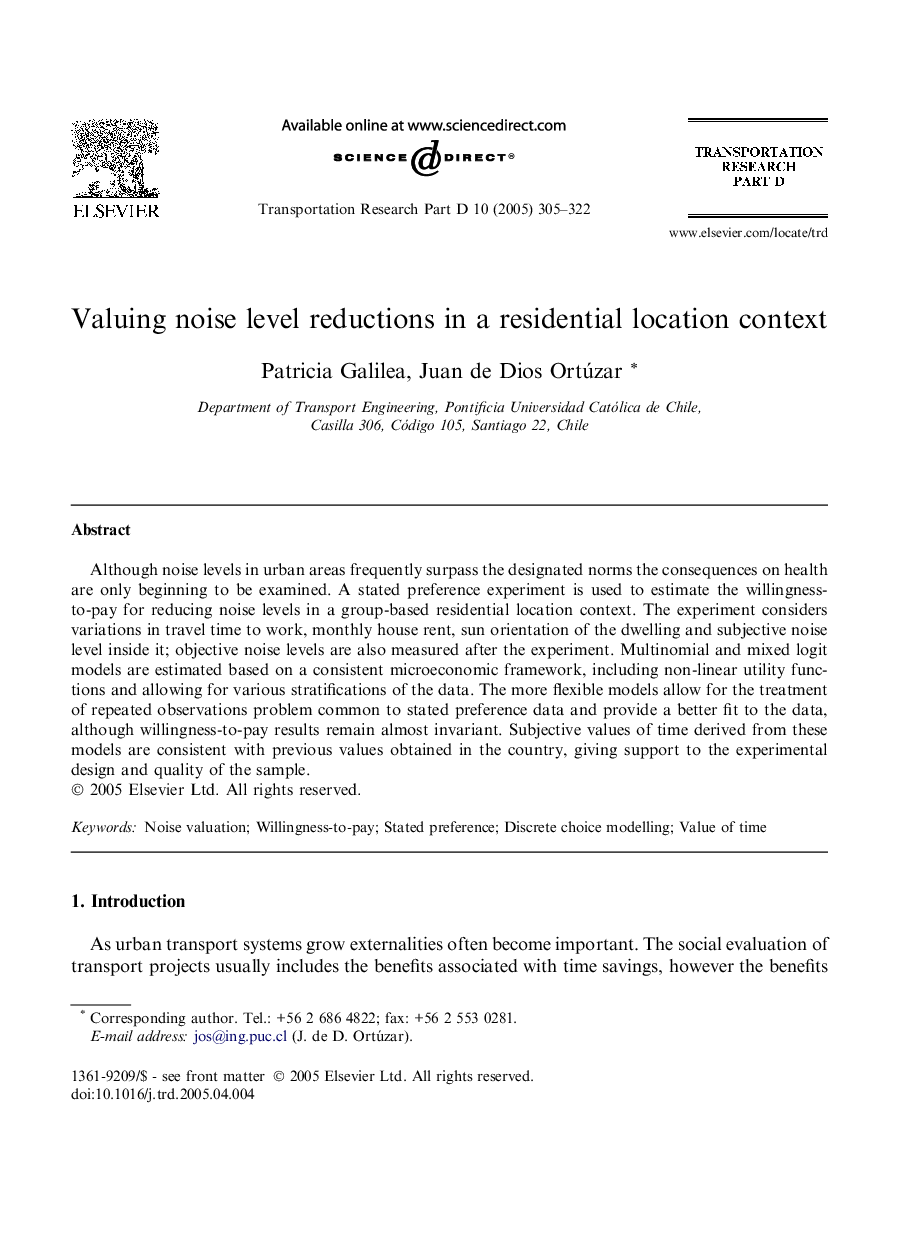| Article ID | Journal | Published Year | Pages | File Type |
|---|---|---|---|---|
| 10508689 | Transportation Research Part D: Transport and Environment | 2005 | 18 Pages |
Abstract
Although noise levels in urban areas frequently surpass the designated norms the consequences on health are only beginning to be examined. A stated preference experiment is used to estimate the willingness-to-pay for reducing noise levels in a group-based residential location context. The experiment considers variations in travel time to work, monthly house rent, sun orientation of the dwelling and subjective noise level inside it; objective noise levels are also measured after the experiment. Multinomial and mixed logit models are estimated based on a consistent microeconomic framework, including non-linear utility functions and allowing for various stratifications of the data. The more flexible models allow for the treatment of repeated observations problem common to stated preference data and provide a better fit to the data, although willingness-to-pay results remain almost invariant. Subjective values of time derived from these models are consistent with previous values obtained in the country, giving support to the experimental design and quality of the sample.
Related Topics
Life Sciences
Environmental Science
Environmental Science (General)
Authors
Patricia Galilea, Juan de Dios Ortúzar,
